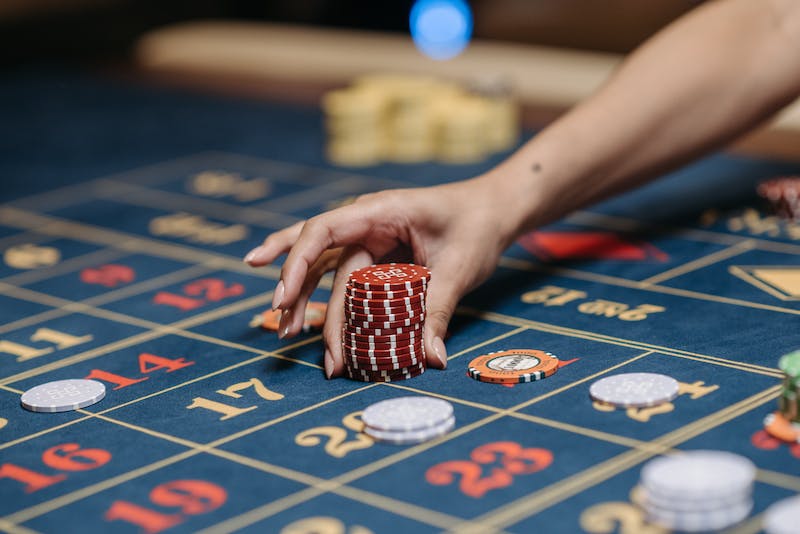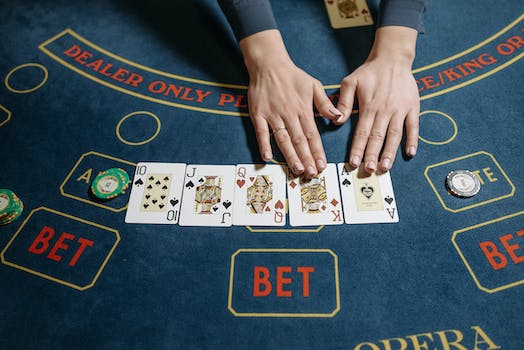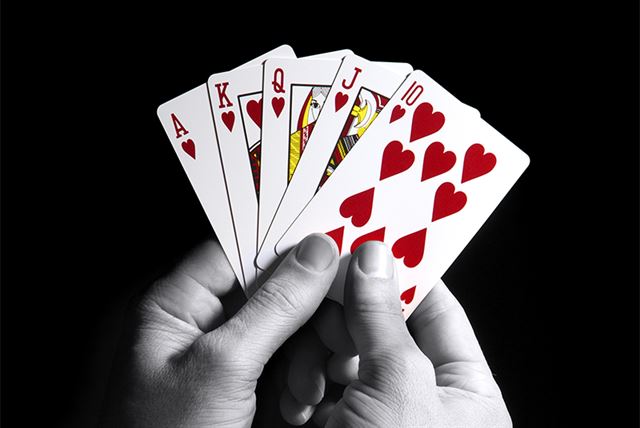In the game of poker, mastering the art of trapping your opponents can be a game-changer. Building the perfect trap involves strategic thinking, careful planning, and skillful execution. By manipulating your poker hands, you can lure your opponents into making costly mistakes and capitalize on their weaknesses. In this article, we will explore various strategic traps and plays that can help you maximize your winnings and outsmart your opponents at the poker table.
The Importance of Hand Selection in Building Effective Poker Traps
Traps are a strategic play in poker that involve luring opponents into making mistakes. They are designed to exploit the weaknesses of other players and maximize your own profits. However, in order to execute a successful trap, you must first have a strong hand to begin with.
The importance of hand selection in building effective traps cannot be overstated. You must carefully consider the strength of your starting hand and its potential to improve as the community cards are revealed. A trap is only effective if you have a hand that can withstand scrutiny and entice your opponents to make costly errors.
One of the key factors to consider when selecting a hand for a trap is its relative strength compared to the range of hands your opponents are likely to have. If you have a hand that is significantly stronger than what your opponents are likely to hold, you have a better chance of trapping them. Conversely, if your hand is weak and easily beaten, attempting a trap may backfire and result in significant losses.
Another important aspect of hand selection for traps is the position at the table. The later your position, the more information you have about your opponents’ actions, and the better you can tailor your trap accordingly. If you are in an early position, it is generally advisable to have a stronger hand before attempting a trap, as you have less information to work with.
Furthermore, the size of the pot should also influence your hand selection for traps. The larger the pot, the more enticing it becomes to set a trap. A big pot means bigger potential profits, but it also means higher stakes. Therefore, it is crucial to have a hand that can withstand the pressure and still come out on top.
When building a trap, it is important to consider the psychology of your opponents. Understanding their tendencies and playing styles can give you valuable insights into how they are likely to react to certain situations. By exploiting their weaknesses and playing to their expectations, you can increase the effectiveness of your trap.
Transitional phrase: In conclusion, hand selection is a critical component in building effective traps in poker. By carefully considering the strength of your starting hand, its relative strength compared to your opponents’ likely range, your position at the table, the size of the pot, and the psychology of your opponents, you can increase your chances of executing a successful trap. Remember, a trap is only as good as the hand it is built upon. So, choose your hands wisely and watch as your opponents fall into your perfectly laid traps.
Maximizing Value: Trapping Opponents with Strong Poker Hands
In the game of poker, one of the most satisfying moments is when you successfully trap your opponents with a strong hand. It’s a strategic move that can maximize the value of your hand and potentially lead to a big win. Trapping opponents requires careful planning and execution, as well as a deep understanding of your opponents’ playing styles and tendencies.
The first step in building the perfect trap is to have a strong hand to begin with. This means starting with premium hands like pocket aces, kings, or queens. These hands have a high probability of winning, and they provide a solid foundation for setting up a trap. However, it’s important not to be too obvious with your strong hand, as this can scare away potential opponents.
Once you have a strong hand, the next step is to create the illusion of weakness. This can be done by playing your hand in a way that suggests you have a weaker hand than you actually do. For example, you can make small bets or check instead of raising aggressively. This can entice your opponents to think they have a chance of winning and encourage them to bet more.
Timing is crucial when it comes to trapping opponents. You need to be patient and wait for the right moment to strike. This often means waiting for your opponents to make a move before revealing the strength of your hand. By allowing them to take the lead, you can then capitalize on their aggression and use it to your advantage.
Another important aspect of trapping opponents is reading their playing styles and tendencies. Every player has their own unique style, and understanding how they play can give you valuable insights into their decision-making process. For example, if you notice that a particular opponent tends to bluff frequently, you can use this knowledge to set up a trap by allowing them to bluff into your strong hand.
Transitional phrase: In addition to reading your opponents, it’s also important to be aware of the overall dynamics of the table. This includes the stack sizes of your opponents, the current betting patterns, and the overall mood of the table. By paying attention to these factors, you can adjust your trapping strategy accordingly and increase your chances of success.
One common trap that experienced players use is the slow play. This involves intentionally playing your strong hand in a way that appears weak, with the goal of luring your opponents into betting more. For example, if you have a set (three of a kind) on the flop, you can check and let your opponents take the lead. This can entice them to bet more, thinking they have the stronger hand, while you patiently wait to strike on later streets.
However, it’s important to note that trapping opponents is not without risks. If your opponents catch on to your strategy, they may become more cautious and avoid falling into your traps. This is why it’s crucial to mix up your play and not rely solely on trapping. By incorporating a balanced strategy that includes both aggressive and trapping plays, you can keep your opponents guessing and maintain an element of surprise.
In conclusion, trapping opponents with strong poker hands is a strategic move that can maximize the value of your hand and lead to a big win. It requires careful planning, patience, and a deep understanding of your opponents’ playing styles. By creating the illusion of weakness, timing your moves, and reading your opponents, you can build the perfect trap and increase your chances of success at the poker table.
Mind Games and Psychological Traps: Exploiting Your Opponents’ Reactions to Poker Hands
One of the most effective ways to exploit your opponents’ reactions is by using reverse psychology. By intentionally displaying a certain reaction or behavior, you can manipulate your opponents into making decisions that benefit you. For example, if you have a strong hand, you might act disinterested or even disappointed, hoping to lure your opponents into thinking they have the upper hand. This can lead them to make larger bets or even go all-in, allowing you to capitalize on their overconfidence.
Another psychological trap you can set is the slow play. This strategy involves deliberately under-betting or checking when you have a strong hand, with the intention of inducing your opponents to bet more aggressively. By appearing weak, you encourage them to take the lead and invest more chips into the pot. Once they have committed a significant amount, you can then strike back with a substantial raise or even go all-in, catching them off guard and potentially forcing them to fold.
Timing is crucial when setting traps with your poker hands. It’s important to pay close attention to your opponents’ behavior and betting patterns. If you notice a player becoming increasingly frustrated or agitated, it may be the perfect opportunity to set a trap. By exploiting their emotional state, you can push them into making impulsive decisions that they may later regret. However, it’s essential to exercise caution and not become too predictable yourself. Varying your strategies and reactions will keep your opponents guessing and prevent them from easily exploiting your own weaknesses.
Another effective psychological trap is the bluff. Bluffing involves representing a stronger hand than you actually have, with the aim of convincing your opponents to fold. This strategy can be particularly powerful when used sparingly and in the right circumstances. By carefully observing your opponents’ reactions and betting patterns, you can identify moments when they are likely to be more susceptible to a bluff. However, bluffing requires a delicate balance. Overdoing it can lead to your opponents catching on and calling your bluffs, diminishing their effectiveness.
To successfully set traps and manipulate your opponents’ reactions, it’s crucial to maintain a serious and focused demeanor. Any signs of nervousness or inconsistency in your behavior can give away your intentions and make it easier for your opponents to read you. By projecting confidence and composure, you can create an aura of unpredictability that will keep your opponents on their toes.
In conclusion, mastering the art of setting traps and manipulating your opponents’ reactions to your poker hands is a vital skill for any serious player. By using reverse psychology, slow play, timing, bluffing, and maintaining a serious demeanor, you can gain a significant advantage at the poker table. However, it’s important to remember that these strategies should be used judiciously and in conjunction with a solid understanding of the technical aspects of the game. With practice and experience, you can become a master of mind games and psychological traps, increasing your chances of success in the world of poker.
Advanced Trap Setups: Combining Poker Hands for Maximum Impact
In the world of poker, mastering the art of trapping your opponents can be the difference between a winning and losing session. While basic traps can be effective, advanced trap setups take your game to a whole new level. By combining poker hands strategically, you can create maximum impact and leave your opponents scratching their heads.
One of the most powerful trap setups is the combination of a strong hand and a weaker hand. This allows you to lure your opponents into a false sense of security, making them believe they have the upper hand. For example, if you have pocket aces and a low pair, you can play the low pair aggressively, making your opponents think they have a chance to beat you. When the flop comes with an ace, you can then strike with your strong hand, trapping your opponents and maximizing your winnings.
Another effective trap setup is the combination of suited connectors. Suited connectors are consecutive cards of the same suit, such as 7 and 8 of hearts. These hands have the potential to make strong flushes or straights, but they are often underestimated by opponents. By playing these hands aggressively, you can catch your opponents off guard when the board comes with favorable cards. This trap setup can lead to big pots and significant profits.
The power of deception is a crucial element in building the perfect trap. By disguising the strength of your hand, you can manipulate your opponents into making costly mistakes. One way to achieve this is by slow-playing your strong hands. Instead of betting aggressively, you can check or call, giving the impression that you have a weaker hand. This entices your opponents to bet more, allowing you to extract maximum value when you eventually reveal your strong hand.
Timing is everything when it comes to executing trap setups. Patience is key, as you need to wait for the perfect moment to strike. This requires careful observation of your opponents’ playing styles and tendencies. By studying their patterns, you can identify the right time to set your trap. For example, if you notice that a particular opponent is prone to bluffing, you can wait for them to make a move before springing your trap. This not only increases your chances of success but also adds an element of psychological warfare to the game.
While trap setups can be highly effective, they also come with risks. It is essential to assess the potential outcomes and weigh the risks against the rewards. Sometimes, the best course of action may be to abandon the trap and play your hand straightforwardly. Flexibility and adaptability are crucial skills to have in your poker arsenal.
In conclusion, advanced trap setups in poker can be a game-changer. By combining poker hands strategically, you can deceive your opponents and maximize your winnings. Whether it’s the combination of a strong hand and a weaker hand, suited connectors, or the power of deception, building the perfect trap requires careful planning and execution. Remember, timing and observation are key, and always be prepared to adapt your strategy if the situation calls for it. With practice and experience, you can become a master trapper and take your poker game to new heights.
In conclusion, building the perfect trap in poker involves strategic planning and utilizing your poker hands effectively. By carefully selecting your starting hands, understanding your opponents’ tendencies, and making calculated plays, you can set up traps that maximize your chances of winning. It is crucial to consider factors such as position, stack sizes, and table dynamics when executing these traps. With practice and experience, players can develop their trap-building skills and enhance their overall poker strategy.





